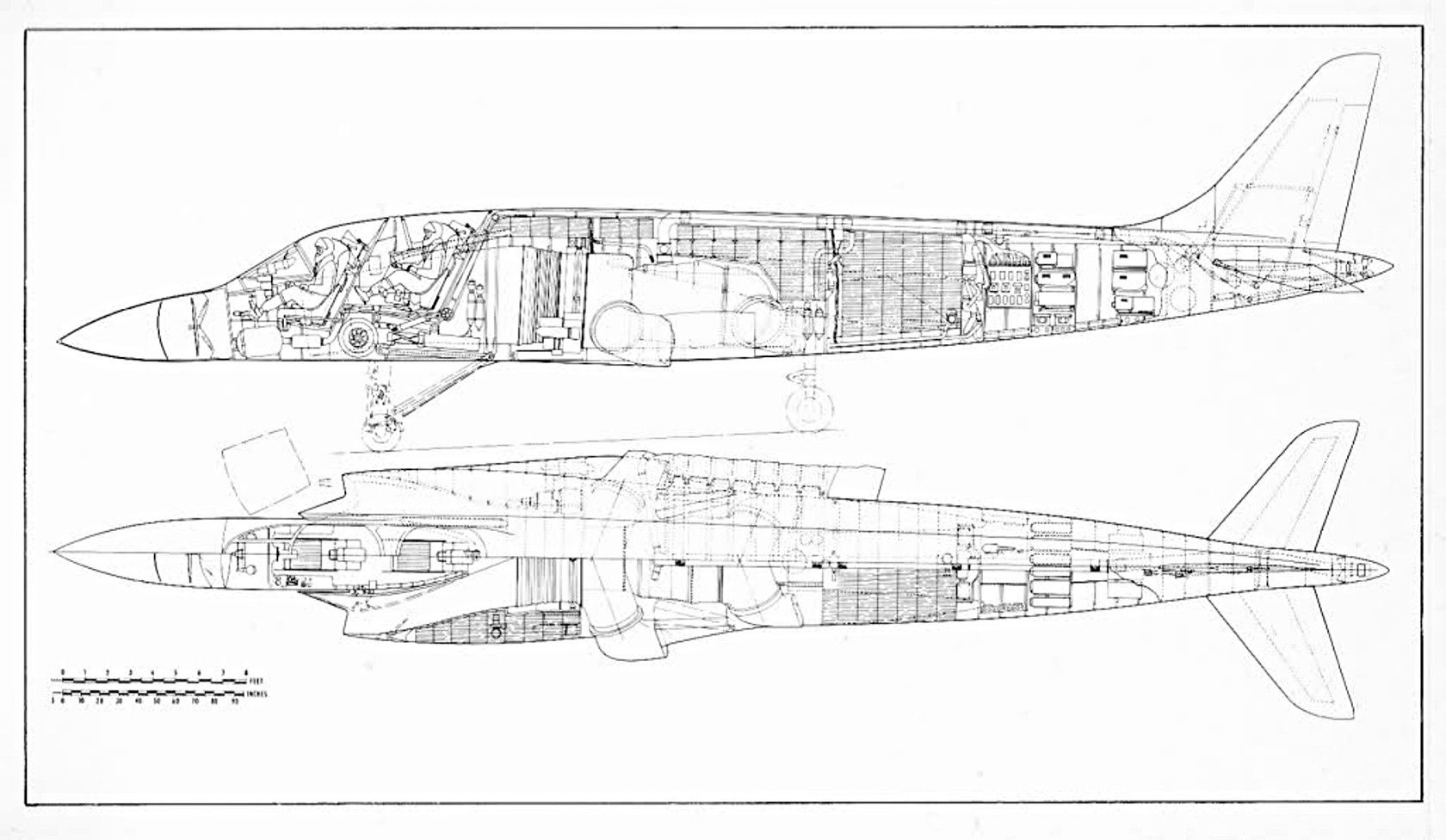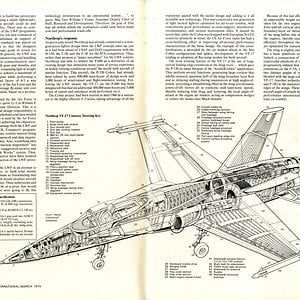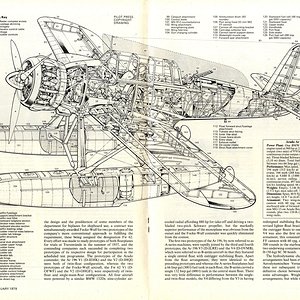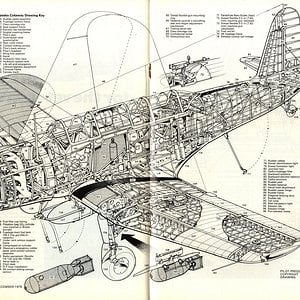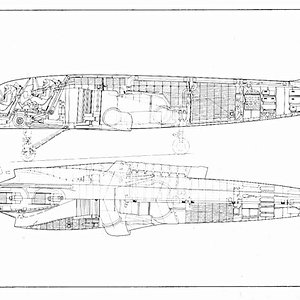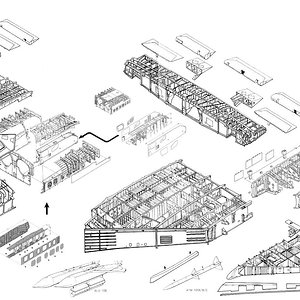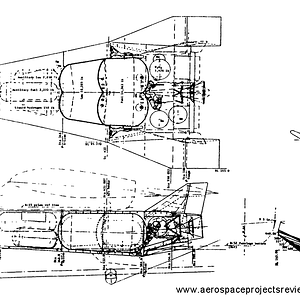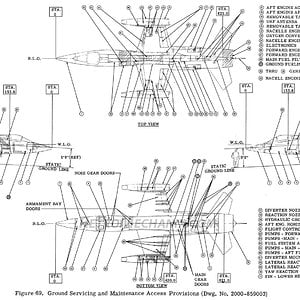Navigation
Install the app
How to install the app on iOS
Follow along with the video below to see how to install our site as a web app on your home screen.
Note: This feature may not be available in some browsers.
More options
You are using an out of date browser. It may not display this or other websites correctly.
You should upgrade or use an alternative browser.
You should upgrade or use an alternative browser.
Disfavour and cancellation[edit source | editbeta]
In November 1963, the RAF still found the P.1154 to be a suitable platform, while the Royal Navy appeared to consider the McDonnell Douglas F-4 Phantom II a better fit for its needs. In response, Hawker Siddeley focused its efforts on the RAF version.[10] On 26 February 1964, it was announced in the House of Commons by the Conservative government that a development contract had been placed for the P.1154, equipped with the BS.100 engine, as an RAF strike aircraft. At the same time it was announced that the Naval requirement would be met by Spey-engined Phantoms. More positive news emerged in 1964; on 30 October the BS.100 engine ran for the first time and Hawker Siddeley received favourable reports that the P.1154 was competitive with the performance of other aircraft, including the F-4 Phantom II.[11]
Starboard black-and-white view of jet aircraft in-flight.
Following the P.1154 cancellation, the Royal Navy purchased the F-4 Phantom II.
However, on 2 February 1965, the incoming Labour government, led by Harold Wilson, cancelled the P.1154 on the grounds of cost, along with several other aircraft such as the BAC TSR-2 strike aircraft and Hawker Siddeley HS.681 VSTOL transport. At the time of cancellation, at least three prototypes were under construction.[N 2] Following the cancellation, the RAF and Royal Navy adopted the F-4 Phantom II instead, but the government also gave a contract for continued work on the P.1127 (RAF), which led to the Harrier; this name had originally been reserved for the P.1154 should it enter service.[11] In retrospect, aviation author Tony Buttler considered the cancellation of the aircraft to be justified, noting the time consuming and expensive failures of attempts by other nations (such as Soviet/Russia's Yak-41 and West Germany's EWR VJ 101) at a supersonic VTOL aircraft.
Specifications (P.1154 – RAF version)[edit source | editbeta]
Planform silhouettes of the P.1154, with the single-seat RAF version on the left and tandem, two-seat Royal Navy Fleet Air Arm version on the right
Data from The British Fighter since 1912[13]
General characteristics
Crew: 1
Length: 49 ft 5 in (15.07 m)
Wingspan: 24 ft 0 in (7.32 m)
Height: ()
Max. takeoff weight: 30,970 lb[14] (14,050 kg)
Powerplant: 1 × Bristol Siddeley BS.100/9 vectored-thrust turbofan engine with PCB, 33,000 lbf (147 kN)(with afterburning)Performance
Maximum speed: Mach 1.3 at sea level (Mach 2.0 at altitude)
Service ceiling: 49,000 ft (15,000 m
Armament
2 x 1000 lb bombs
http://www.harrier.org.uk/history/history_p1154.htm
In November 1963, the RAF still found the P.1154 to be a suitable platform, while the Royal Navy appeared to consider the McDonnell Douglas F-4 Phantom II a better fit for its needs. In response, Hawker Siddeley focused its efforts on the RAF version.[10] On 26 February 1964, it was announced in the House of Commons by the Conservative government that a development contract had been placed for the P.1154, equipped with the BS.100 engine, as an RAF strike aircraft. At the same time it was announced that the Naval requirement would be met by Spey-engined Phantoms. More positive news emerged in 1964; on 30 October the BS.100 engine ran for the first time and Hawker Siddeley received favourable reports that the P.1154 was competitive with the performance of other aircraft, including the F-4 Phantom II.[11]
Starboard black-and-white view of jet aircraft in-flight.
Following the P.1154 cancellation, the Royal Navy purchased the F-4 Phantom II.
However, on 2 February 1965, the incoming Labour government, led by Harold Wilson, cancelled the P.1154 on the grounds of cost, along with several other aircraft such as the BAC TSR-2 strike aircraft and Hawker Siddeley HS.681 VSTOL transport. At the time of cancellation, at least three prototypes were under construction.[N 2] Following the cancellation, the RAF and Royal Navy adopted the F-4 Phantom II instead, but the government also gave a contract for continued work on the P.1127 (RAF), which led to the Harrier; this name had originally been reserved for the P.1154 should it enter service.[11] In retrospect, aviation author Tony Buttler considered the cancellation of the aircraft to be justified, noting the time consuming and expensive failures of attempts by other nations (such as Soviet/Russia's Yak-41 and West Germany's EWR VJ 101) at a supersonic VTOL aircraft.
Specifications (P.1154 – RAF version)[edit source | editbeta]
Planform silhouettes of the P.1154, with the single-seat RAF version on the left and tandem, two-seat Royal Navy Fleet Air Arm version on the right
Data from The British Fighter since 1912[13]
General characteristics
Crew: 1
Length: 49 ft 5 in (15.07 m)
Wingspan: 24 ft 0 in (7.32 m)
Height: ()
Max. takeoff weight: 30,970 lb[14] (14,050 kg)
Powerplant: 1 × Bristol Siddeley BS.100/9 vectored-thrust turbofan engine with PCB, 33,000 lbf (147 kN)(with afterburning)Performance
Maximum speed: Mach 1.3 at sea level (Mach 2.0 at altitude)
Service ceiling: 49,000 ft (15,000 m
Armament
2 x 1000 lb bombs
http://www.harrier.org.uk/history/history_p1154.htm

